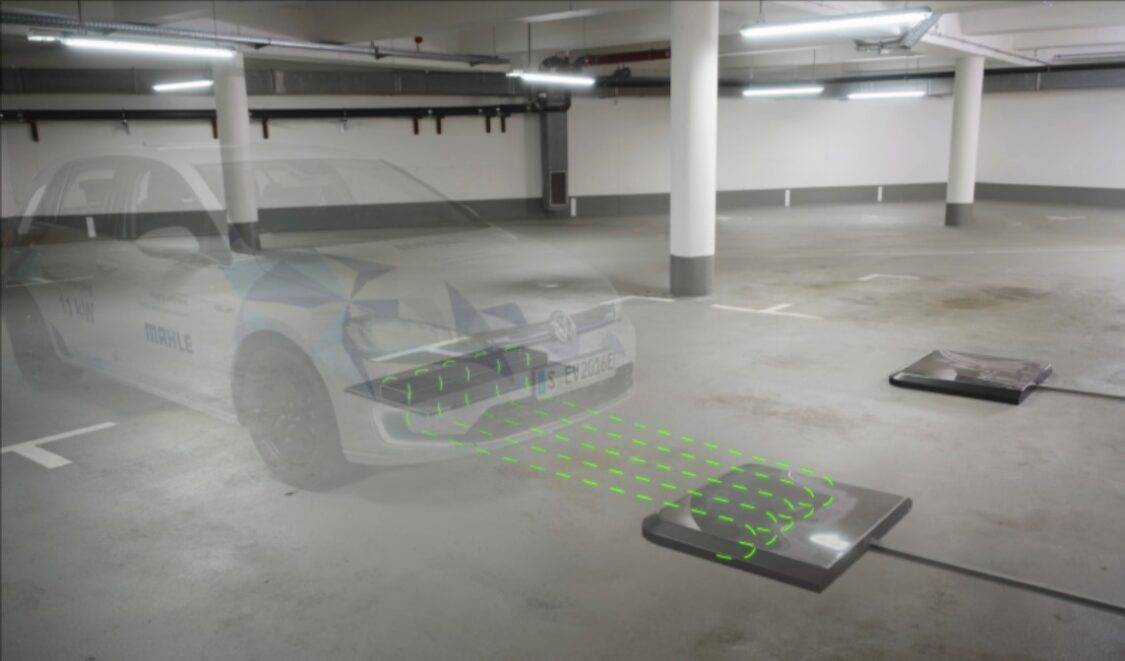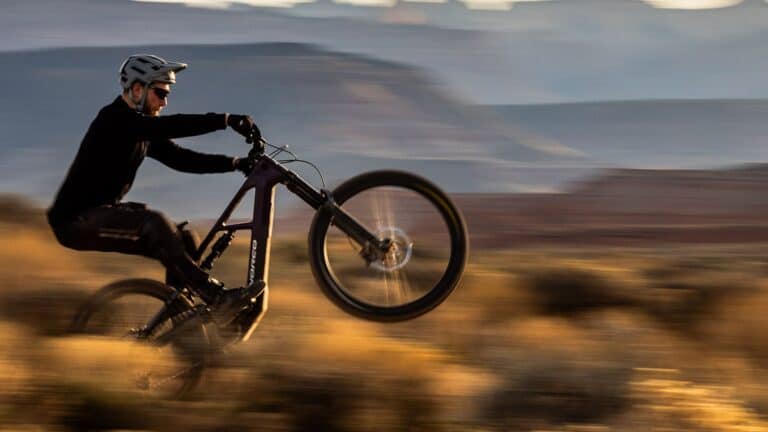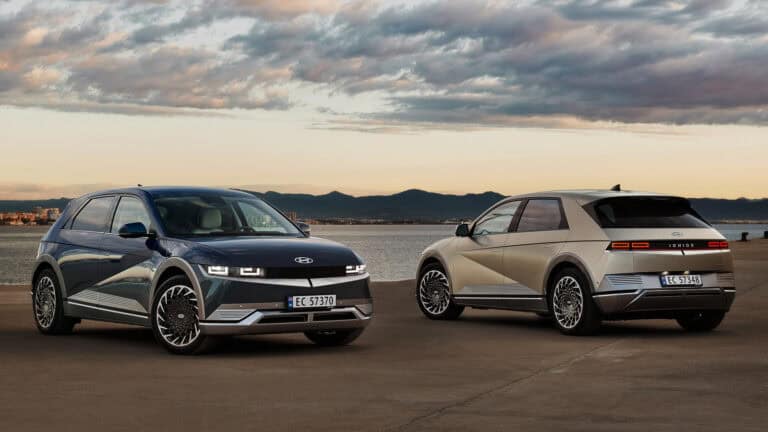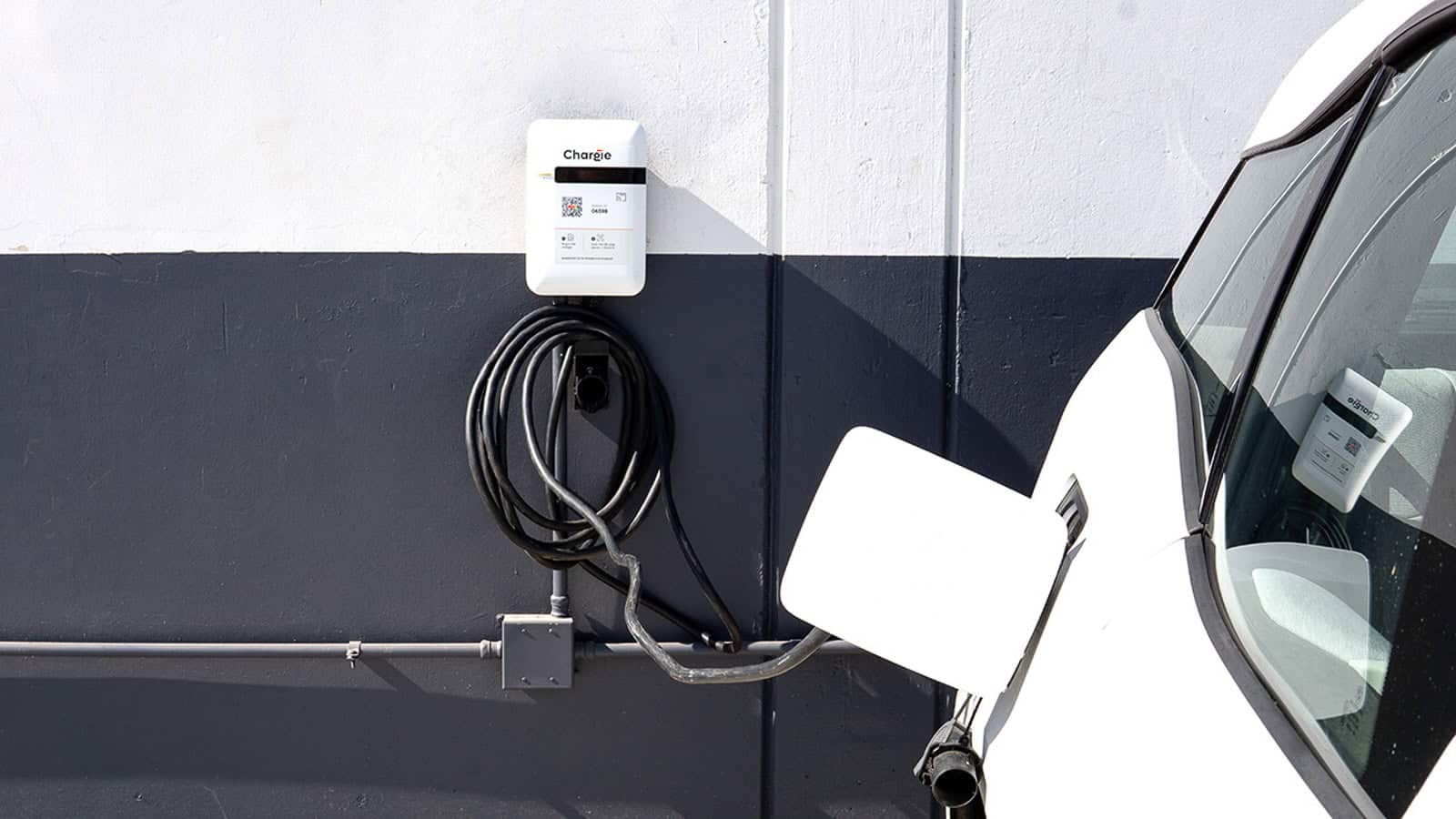- Wireless charging standards for roads, parking spaces, and EVs were set by Electreon and MAHLE.
- The first EV charging road opened west of Detroit in late November.
- Wireless EV charging can reduce battery sizes, EV sticker prices, and reliance on electrical grids.
It’s been an exciting few weeks in the realm of wireless EV charging. The first wireless EV charging road in the United States opened in Michigan, and Electreon and MAHLE’s wireless charging system was selected as the standard for the SAE J2954 charging ports for heavy-duty vehicles.
As more drivers are moving to electric vehicles, efficient and reliable EV charging needs to become the norm. Fortunately, wireless charging is moving ahead, and it could end up reducing battery size and lowering the cost of EV ownership.
ADVERTISEMENT
The Cost of Heavy EV Batteries
Wireless charging has the ultimate goal of making EV ownership sustainable and scalable. As it currently stands, automakers are building EVs with massive batteries. Consider the least expensive Lucid Air with the 92-kWh battery or the 128-kWh battery pack in the Tesla Cybertruck.
These heavy batteries put added wear and tear on roads and tires, while also upping the sticker price. With wireless charging, EVs could charge while on the road, reducing charging times at public charging stations and shrinking the strain on local power grids.
The First EV Charging Road in Detroit

The birthplace of the automobile is also the place where EV charging evolved. Two years after the EV charging road was announced, the quarter-mile segment of 14th Street, west of downtown Detroit opened for testing on November 29.
This road has copper inductive charging coils embedded into the pavement so properly equipped EVs can charge while idling, parking, or driving on it. The charging technology comes from Electreon, which also has contracts to build EV charging roads in Germany, Sweden, Italy, and Israel.
The road has yet to open to the public. Instead, it will be used for testing as Electreon and Michigan automakers perfect the technology for future EVs. Very few EVs can use the technology, as most aren’t equipped with the receiver that accesses power from the underground coils.
ADVERTISEMENT
Stefan Tongur, Electreon vice president of business development, said, “This project paves the way for a zero-emission mobility future, where EVs are the norm, not the exception.” The coils activate only when an EV equipped with a receiver passes over them. The road is safe for all motorists, pedestrians, and wildlife.
As wireless charging is still new to the EV world, only one EV with a wireless receiver is actually sold in the US. The BMW 530e plug-in hybrid has a wireless receiver from WiTricity. The company received a $25 million investment from Siemens. Stakeholders at WiTricity are also in talks with General Motors to equip their upcoming EVs with wireless receivers.
Developing & Standardizing Charging Wireless

EV drivers understand the need for standardizing charging stations. For EV drivers, initials like CCS, J1772, and NACS have become part of their vocabulary. As innovators continue to perfect wireless charging, they also have standard lingo: SAE J954 and DIPS. The Differential Inductive Positioning System (DIPS) uses four flat coils and a magnetic field for alignment.
When an electric vehicle parks atop a wireless charger, the DIPS will position the vehicle for charging. Ideally, the system does it automatically. Once wireless charging becomes the norm, EV drivers park in their garage and the charging system gets to work. There’s no need to open a door, plug in, and unplug.
Unfortunately, wireless charging is too expensive, especially compared to wired Level 2 home charging units. Aftermarket receivers are available for EVs, but they are practically useless at this point.
Genesis equipped the GV60 in South Korea with a wireless receiver, and Tesla purchased a wireless charging company. Toyota also reports that wireless charging is driving their goal toward smaller batteries. Most wireless charging systems are in the developing and testing phases. Exciting wireless charging developments are on the horizon.
Investing in Wireless

Wireless charging could be a major job creator, as it involves several technology components including inductive, resonant, radio frequencies, receivers, transmitters, and more. The industry is expected to grow by $12 billion by 2027, especially as EV drivers demand more convenient charging systems.
The market driver is literally the driver. EV drivers complain about slow charging, which can be significantly longer than a typical gas station fillup. The general public worries about the power grid, as more EV drivers plug in at home and on the road. Wireless charging systems can charge EVs while driving, idling, and parking, potentially EV runs without needing to stop.
ADVERTISEMENT
Another driver of wireless charging investment, coupled with the potential advancement of solid-state batteries, is the prospect of smaller battery sizes. OEMs assert that wireless charging, in tandem with emerging solid-state battery technology, could reduce battery sizes by up to 80%. This synergy not only enables charging on the go but also minimizes the storage requirements for electric vehicles, marking a significant step toward a more sustainable and efficient future of electric mobility.
Automakers need backward integration because EVs do not have wireless charging receivers. Technology will need to be created to add receivers to EVs already on the road, and OEMs will need to add them to new models.
The challenge to wireless EV charging is the cost. As the technology is new, it is expensive. Changing the perspective of EV owners and potential EV owners is another issue, as most drivers are accustomed to filling up with a plug or at a gas pump. In general, wireless charging systems are at least 30% more costly than wired charging systems.
New Wireless EV Charging Standards

Passenger cars aren’t the only EVs that could benefit from wireless charging systems. Heavy-duty vehicles like semi trucks and school buses need electrification and innovative charging. In 2021, medium- and heavy-duty trucks emitted 417 million metric tons of CO2. Their tailpipe emissions have increased by approximately 2% every year since 2000.
The SAE J2954 wireless charging standard will increase the adoption of EVs for passenger cars and heavy-duty vehicles. MAHLE has opened the technology to the electric vehicle industry through a FRAND (fair, reasonable, and non-discriminatory) license.
The new standard will be published in 2024 and will include specifications for automakers, wireless charging manufacturers, and road builders. The specs will include alignment, authentication, and pairing in the receivers while electric vehicles are parking, idling, and driving above the in-road coils.
Israel-based company Electreon and German company MAHLE worked together to establish the wireless charging standards with SAE (the Society of Automotive Engineers). Developing wireless charging standards lets OEMs and other manufacturing companies speed up the time-to-market for in-car receivers and public and residential charging systems.
ADVERTISEMENT

FEATURE IMAGE: ELECTREON
FTC: We use income-earning auto affiliate links. Learn more.




























